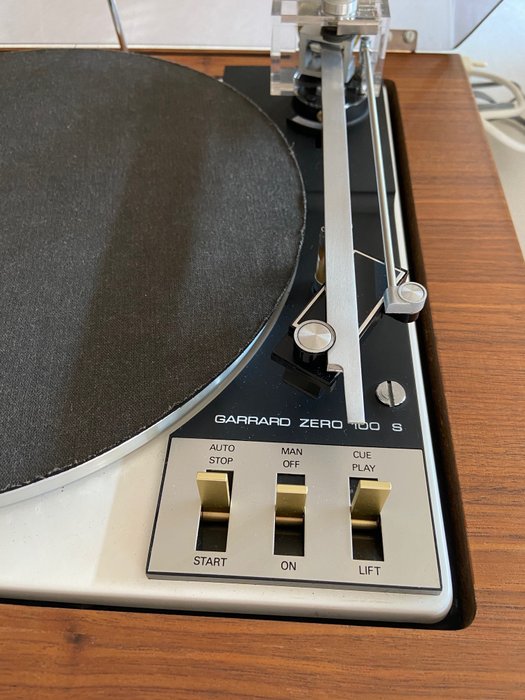

Was the Zero 100 model, introduced in 1971. The top of the line Garrard was unique and relatively expensive (about like a Thorens TD-160). These were quiet turntables with aformosia wood dampened tonearms. The Synchro-Lab 95's most notable and criticized feature was its plastic plinth. Around 1970, the Synchro-Lab 95 arrived in an attempt to keep pace with the Dual 1219. This was a very solid unit with a metal motor board and wood base that is still occasionally seen today. Introduced in 1964 to compete with other semi-automatic transcription turntables with record changer capability, particularly the Dual 1019, was the Garrard Lab 80. Tracked best at around three grams, a stylus with a conical/spherical diamond tip wasīest. If you canįind a used one in decent condition today, it probably still works. Tonearm) were sort of the stone axes of turntables, but they worked.

The early Garrard RC88 and RC98 (which featured a better, counter-balanced If I recall correctly, it was the least expensive turntable on the Stereophile Recommended Components list for many years." Mine has performed as intended for the past 22 years and sees weekly usage. Other notable features of the CS-505 include 33 and 45 RPM speeds, adjustable anti-skating, gimballed low-mass tone arm, a suspended chassis and belt drive. Two versions of the CS-505 were available, the CS-505-2 with the standard head shell and the CS-505-3 with the ultra-low mass (ULM) head shell. "The CS-505 is a semi-automatic type, meaning that it lifts the arm and shuts off the motor at the end of the record. Reader Chuck Pollock wrote this about the CS505:

A slightly improved version is still available today (505-4, street price about $1023). The remained a standard through the 1980's. It was upgraded in 1983 (505-2) with an improved tonearm (easily identified by the two cartridge mounting screws in the headshell, instead of one) and later the CS505-3. The later Dual CS505-1, a single play turntable, was introduced in 1981 and became highly rated. Multiple play, adjustable anti-skating, pitch control (+/- 6%), cue Head shell: Skeletal, removable, accepts cartridges weighing 1-12 grams Isolated, synchronous, continuous pole typeġ2" diameter, non-magnetic, dynamically balanced To give an idea of the performance of a good turntable of thisĪrea, here are the specifications for the Dual 1219, which are representative:

These Duals were well made and highly reliable many are still in Dual turntables came with relatively low mass tonearms, especially the Model 1019 and its successor the Model 1219. The top of the line Dual turntables of this period were the All of these cartridges were moving magnet types, except for the moving coil Ortofon. Of cartridges made by Elac (they invented the moving magnet cartridge), Shure, Empire, Pickering, Stanton, Ortofon, Grado, Audio Technica, Signet, B&OĪnd others. Standard ½" mount cartridges and most users chose from a large selection The cartridge heads of both brands accepted Upper-middle category stereo systems, while Garrard dominated in most low to Dual was probably the most common turntable found in Most of the Dual and Garrard models used an idler Used in single play/semi-automatic mode with automated tonearm lift/return at the end of the The upper models of both the Garrard and Dual lines were typically Both brands used radial (pivoted) tonearms and had record changerĬapability. Probably the most ubiquitous turntable brands found inĬomponent music systems of the late 1960's and early 1970's were Garrard (UK) and Dual Surprising comeback in the decade after their nadir at the dawn of the 21st Century. Both turntables and LP records have made a Today, with vinyl records a niche audiophile market, thereĪre relatively few turntables, but practically all of them are B&O Beogram 3404 illustration from period advertisement.īetween roughly 19 there were lots of turntables, LP recordsīeing the primary program source, but relatively few audiophile/professional


 0 kommentar(er)
0 kommentar(er)
